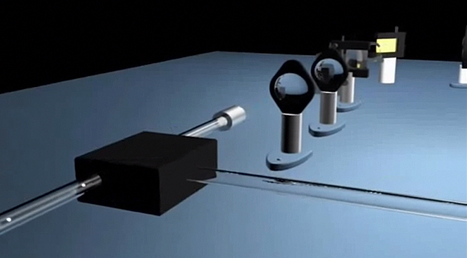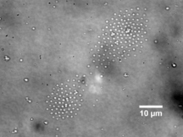A few years back, a pair of researchers at Massachusetts General Hospital made human cells glow by impregnating them with a molecule that's normally found in jellyfish called green fluorescent protein (GFP) and packing them into a resonant cavity that amplified the amount of light each cell produced. Now, according to a new study recently published in the journal Nano Letters, a team of scientists from the University of St Andrews have developed a means of making individual glowing cells also act as their own resonant cavities.
The St. Andrews team accomplished this by coaxing each cell to engulf a tiny plastic bubble (the green dot in the image above) that acts as a resonant cavity. Each bubble is precisely sized and imbued with fluorescent dye. When a laser hits the cell, it excites the dye which bounces around and amplifies inside the bubble, then fluoresces at a different wavelength. Interestingly, the color of the light that the cell emits depends on the size of the bubble. So far, the researchers have gotten cells to produce light at three different wavelengths. And while the team has only been able to get the method to work in petri dishes, they hope to further develop it into a means of tracking specific cells -- say, tumor cells -- for days, even weeks.



 Your new post is loading...
Your new post is loading...









